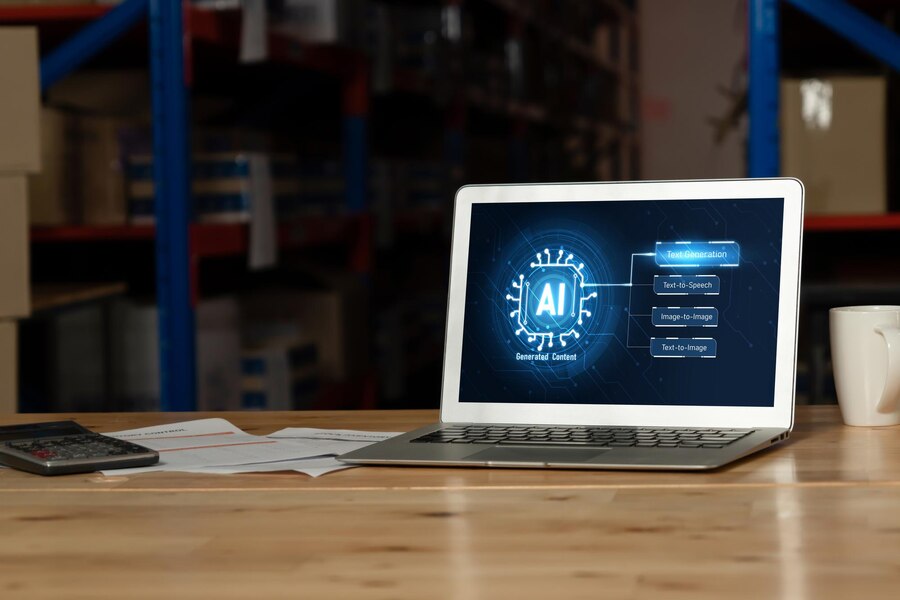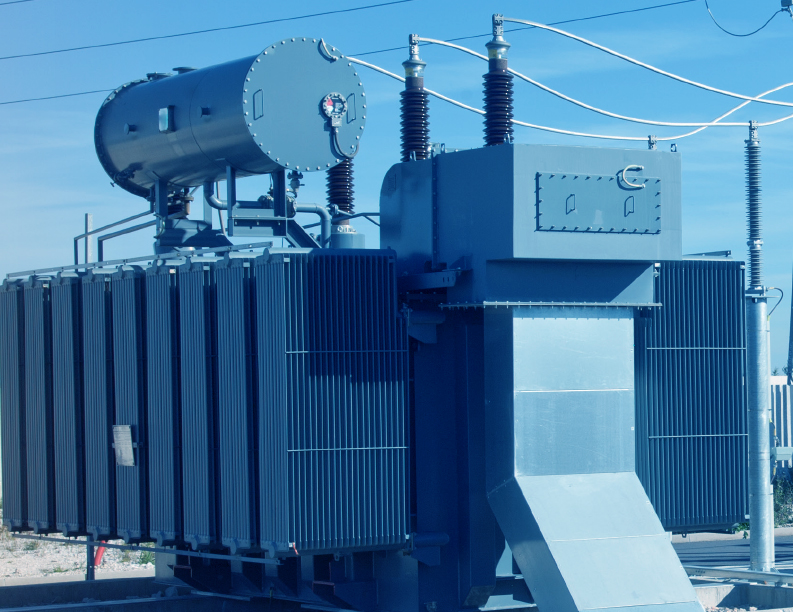Introduction:
In an industry where innovation steers progress, the incorporation of advanced AI and ML technology into generator monitoring stands as a vital evolution. Working professionals in the electrical industry are continually seeking avenues to enhance efficiency and reliability in power generation. AI and ML technologies are like powerful tools that are changing how we keep an eye on generators. They’re making it much better, not just by making things run smoother, but also by helping us predict and stop problems before they happen. This is a big step forward in how we manage and take care of generators.
Leveraging AI for Predictive Analysis
Artificial Intelligence (AI) significantly uplifts the prospects of generator monitoring by offering predictive analytics capabilities. These analytical insights go a long way in foreseeing potential disruptions, providing ample time for operators to intervene and prevent downtime. This proactive approach ensures a seamless operation, minimizing unforeseen breakdowns and enhancing the reliability of generators.
In the evolving landscape of the electrical industry, a paradigm shift is underway, steering the sector towards more intelligent and data-driven operations. Central to this transition is the incorporation of advanced AI and ML technology in generator monitoring. This confluence of technologies promises not only to enhance efficiency but also to foster a culture of predictive analysis, revolutionizing the way generator assets are managed and monitored.
Predictive analysis, facilitated by AI, acts as a sophisticated tool capable of foreseeing potential disruptions even before they occur. This forward-thinking approach is fundamentally altering the dynamics of generator monitoring, turning erstwhile reactive measures into proactive strategies. By analyzing historical and real-time data, AI algorithms can identify patterns and anomalies, thereby predicting possible malfunctions or inefficiencies with remarkable precision.
The potency of AI in generator monitoring is further accentuated when coupled with machine learning (ML) techniques. ML, with its continuous learning and adaptation capabilities, refines the predictive models over time, making them more accurate and reliable. As these systems ingest more data, their predictive prowess enhances, allowing for the development of insightful forecasts that can guide maintenance schedules, optimize operations, and prevent unscheduled downtimes.
Furthermore, AI brings to the table complex analytical capabilities that go beyond mere predictive analysis. It can simulate various scenarios, assessing the potential impacts of different operational strategies, thereby assisting in informed decision-making. For instance, it can analyze the ripple effects of a certain component failing, providing a comprehensive view of how different assets interact and depend on each other. This holistic approach facilitates the development of strategies that are not only reactive but also anticipative of future trends and challenges.
But the capabilities of AI in generator monitoring are not confined to predictive analytics alone. They extend to facilitating real-time monitoring that offers a granular view of asset performance. This real-time insight is critical in making swift adjustments to operations, ensuring that the generators run at optimal efficiency at all times. Moreover, AI can integrate with other technologies like IoT, thereby creating a cohesive ecosystem where various assets communicate and work in harmony, further enhancing the effectiveness of predictive strategies.
In essence, leveraging AI for predictive analysis in generator monitoring is a transformative move, promising a future where electrical operations are more reliable, efficient, and aligned with the evolving industry demands. By harnessing the capabilities of AI, professionals in the electrical industry stand at the cusp of a new era, where innovation drives progress, and data-driven insights foster a culture of proactive asset management, marking a significant leap towards achieving operational excellence in generator monitoring.
ML Algorithms for Fine-Tuned Performance
Machine Learning (ML), a subset of AI, plays a crucial role in optimizing the performance of generators. By continuously learning and adapting to new data, ML algorithms can fine-tune the operations to ensure maximum efficiency. These algorithms analyze patterns and trends, making accurate predictions and suggesting adjustments that can help in minimizing energy wastage and enhancing output.
In the ever-competitive realm of the electrical industry, the quest for optimal asset performance is perennial. At the forefront of this pursuit are machine learning (ML) algorithms, whose implementation in generator monitoring signifies a marked departure from traditional methods, ushering in a regime of precision, efficiency, and fine-tuned performance. ML, a sophisticated subset of AI, imbues generator monitoring systems with dynamic learning capabilities, fostering an environment where data is not just analyzed but is utilized to continually enhance asset performance.
ML algorithms work on the principle of learning from data patterns and making predictions or decisions without being explicitly programmed to perform the task. In the context of generator monitoring, these algorithms can analyze vast arrays of data derived from sensors and other monitoring devices, identifying patterns and trends that might be elusive to human analysis. This nuanced analysis is a cornerstone in developing strategies that are attuned to the real-time demands of the generator’s operational environment.
One of the standout features of ML in generator monitoring is its ability to facilitate predictive maintenance. By continuously monitoring various parameters such as vibration, temperature, and pressure, ML algorithms can predict when a component is likely to fail or requires maintenance. This predictive stance enables timely interventions, averting costly downtimes and enhancing the longevity of the assets.
Furthermore, ML algorithms play a pivotal role in optimizing generator performance. By analyzing historical and real-time operational data, these algorithms can suggest adjustments to operational parameters, helping in enhancing efficiency and reducing energy wastage. For instance, ML can assist in load forecasting, enabling generators to operate at optimal levels, thereby preventing overloads and underloads that can adversely affect the performance and lifespan of generators.
Additionally, ML’s role in enhancing security cannot be understated. These algorithms can be employed to monitor for potential security breaches, analyzing data traffic for anomalies and potentially thwarting cyber-attacks before they can inflict damage. In an industry where security is paramount, the proactive stance facilitated by ML is a significant asset.
The integration of ML algorithms in generator monitoring systems thus stands as a beacon of innovation, promising a future where electrical assets are managed with unprecedented precision and foresight. As we move towards a more data-driven industry landscape, the role of ML in shaping the next frontier in generator monitoring becomes increasingly central. By adopting advanced AI and ML technology, professionals in the electrical industry are not just keeping pace with the advancements but are positioning themselves at the vanguard of a technological revolution, steering the sector towards a future marked by reliability, efficiency, and excellence.
Real-Time Data Analysis and Reporting
Generator monitoring isn’t just about forecasting potential disruptions; it is equally about assessing the real-time performance of assets. AI and ML technologies facilitate instantaneous data analysis, offering a detailed glimpse into the generators’ current state. This real-time analysis assists in making informed decisions, thereby steering the operations towards optimum productivity.
In the rapidly evolving sphere of the electrical industry, the necessity for robust and dynamic generator monitoring mechanisms cannot be overstated. At this juncture, the role of real-time data analysis and reporting emerges as a critical component in maintaining and enhancing the efficacy of electrical assets. Harnessing the prowess of advanced AI and ML technology, modern generator monitoring systems are now equipped to deliver insightful data analysis instantaneously, thereby empowering industry professionals to make informed decisions promptly.
Real-time data analysis, an integral facet of generator monitoring, entails the continuous assessment of various operational parameters to provide a detailed snapshot of the asset’s current performance metrics. This type of monitoring involves leveraging cutting-edge technology to collate data from a myriad of sensors and indicators embedded within the generator system. The collected data, rich in detail, is then analyzed to glean insights that can significantly influence operational strategies and enhance overall efficiency.
Central to this process is the ability to instantaneously identify and respond to fluctuations in performance parameters. This swift response mechanism, facilitated by real-time data analysis, ensures that potential issues can be addressed before they escalate into major problems, thereby averting significant downtimes and potential financial losses. Moreover, real-time monitoring allows for a more granular view of the generator’s performance, enabling operators to pinpoint specific areas that may require attention or adjustment.
Furthermore, advanced AI and ML technology have brought a paradigm shift in reporting methodologies. Reporting is no longer a static, periodic activity but a dynamic process that offers actionable insights continuously. This transformation means that operators can now access detailed reports that encapsulate various performance metrics, offering a comprehensive view of the generator’s operational health. Such in-depth reporting proves instrumental in developing strategies that are aligned with the current performance trends, fostering a proactive approach to asset management.
But the influence of real-time data analysis extends beyond mere performance monitoring. It also plays a pivotal role in energy management, helping in identifying areas where energy utilization can be optimized, thereby fostering a culture of sustainability. Moreover, this real-time insight facilitates better coordination between different assets within the electrical infrastructure, creating a cohesive ecosystem where various components work synergistically to enhance overall performance.
As the electrical industry strides towards a future marked by innovation and technological advancements, the role of real-time data analysis and reporting in generator monitoring becomes increasingly prominent. By embracing these technologies, industry professionals can not only enhance the reliability and efficiency of their assets but also foster a culture of continuous improvement, where data-driven insights guide the journey towards operational excellence, setting new benchmarks in generator monitoring and asset management.
Enhancing Security and Compliance
With the inclusion of advanced AI and ML technology, generator monitoring systems also promise enhanced security features. These technologies can monitor for potential security breaches and ensure that the system complies with the necessary industry regulations. This security aspect is vital in protecting sensitive data and ensuring the uninterrupted operation of generators.
In a domain where the reliance on advanced systems and technology is growing exponentially, safeguarding sensitive electrical infrastructure becomes imperative. In this context, generator monitoring surfaces as a critical asset, not just in maintaining operational fluency but also in fortifying security and bolstering compliance with prevailing standards and regulations. Here, we delve into how the integration of advanced AI and ML technology is reshaping the frameworks of security and compliance in the electrical industry.
Security in the electrical sector is multifaceted, encompassing both physical and cybersecurity elements. Generator monitoring systems equipped with AI and ML technology bring to the fore sophisticated security protocols that can detect and thwart potential threats with increased proficiency. For instance, machine learning algorithms can identify patterns and anomalies in data traffic, thereby providing an early warning system for potential cyber-attacks. Moreover, AI can assist in developing robust encryption techniques that safeguard sensitive data from unauthorized access, thus fortifying the cyber infrastructure.
Furthermore, AI and ML technologies facilitate enhanced physical security measures. By integrating with surveillance systems and sensors, these technologies can monitor the physical environment around the generators, detecting any unauthorized entries or potential threats. This integration offers a comprehensive security solution that guards against both cyber and physical threats, thereby ensuring uninterrupted and secure operations.
On the compliance front, generator monitoring systems play a pivotal role in adhering to the stringent regulations that govern the electrical industry. Compliance, in this regard, is not just about meeting statutory requirements but also about aligning operations with best practices to ensure safety, efficiency, and reliability. AI can assist in this endeavor by automating the compliance monitoring process, ensuring that the operations adhere to the prescribed norms consistently.
Additionally, AI and ML technologies can streamline reporting processes, making it easier to generate compliance reports that meet the specific requirements of regulatory bodies. These technologies can analyze vast data sets, extracting relevant information to create detailed and accurate reports, thus easing the compliance burden on professionals in the industry.
Furthermore, AI and ML can aid in predictive compliance – a proactive approach where potential compliance issues are identified and addressed before they become significant problems. This foresight not only helps in avoiding penalties but also fosters a culture of compliance where standards are seen as benchmarks of quality rather than mere regulatory requirements.
In essence, the integration of advanced AI and ML technology in generator monitoring is paving the way for an environment where security and compliance are not just mandated practices but are ingrained in the operational ethos. By leveraging these technologies, industry professionals can create a fortified and compliant operational landscape, where excellence in security and adherence to standards are viewed as critical elements in achieving operational supremacy and safeguarding critical infrastructure.
Cost Efficiency and Sustainability
Incorporating AI and ML technologies in generator monitoring also paves the way for cost-effective and sustainable operations. By optimizing the performance and reducing wastages, these technologies contribute to a greener and more economically viable power generation process, aligning with the global push towards sustainability.
In today’s rapidly evolving electrical industry, striking a balance between operational efficiency and sustainability is of utmost importance. It is here that generator monitoring, particularly when powered by advanced AI and ML technology, emerges as a potent tool in not only curbing operational costs but also steering the industry towards a more sustainable pathway. Let’s delve deeper into how integrating sophisticated technologies into generator monitoring systems can be a linchpin in achieving cost efficiency and sustainability.
A significant facet where AI and ML technologies make a substantial impact is in the realm of predictive maintenance. Through generator monitoring, these technologies can predict potential failures before they occur, thus avoiding costly downtimes and emergency repairs. By transitioning from a reactive maintenance approach to a predictive one, organizations can substantially reduce maintenance costs while enhancing the lifespan and performance of their assets.
Moreover, AI and ML technologies allow for optimal resource allocation, wherein these systems can analyze data patterns to ascertain the most efficient use of resources, thereby minimizing waste and promoting sustainability. For instance, machine learning algorithms can fine-tune generator operations to ensure that they are functioning at optimal levels, minimizing fuel consumption and reducing greenhouse gas emissions.
Furthermore, these technologies facilitate smarter energy management. By analyzing operational data in real-time, AI and ML can assist in identifying opportunities for energy savings, thus lowering operational costs and reducing the environmental footprint. From optimizing load distribution to enhancing fuel efficiency, these technologies can foster a culture of sustainability within the organization.
Moreover, in an industry where compliance with environmental regulations is critical, AI and ML technologies can automate the compliance monitoring process, thus ensuring that operations are aligned with the prescribed environmental standards. This alignment not only helps in avoiding penalties but also promotes a brand image of responsibility and sustainability, which can be a significant asset in today’s eco-conscious business landscape.
In summary, the integration of advanced AI and ML technology into generator monitoring systems is proving to be a catalyst by providing optimal performance, cost efficiency and sustainability in the electrical industry. By leveraging these technologies, professionals in the sector can navigate the complex landscape of operational and environmental demands with finesse, carving out pathways that are both economically viable and environmentally sustainable. Thus, as the industry strides towards a future marked by innovation and responsibility, generator monitoring stands as a beacon of progress, guiding the way towards a more cost-efficient and sustainable operational paradigm.
Conclusion
As the electrical industry propels forward, embracing innovative solutions becomes not only beneficial but essential. The integration of advanced AI and ML technology in generator monitoring stands as a testimony to this transition, offering avenues to enhance reliability and efficiency in unprecedented ways. Working professionals in the electrical industry can leverage these technologies to navigate the complexities of modern power generation, setting a benchmark for excellence and innovation. The future of generator monitoring is here, redefined and revolutionized, promising a journey towards more reliable and efficient power generation processes.




